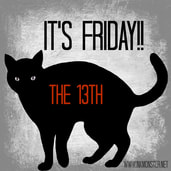 After a few weeks of being under a stay-at-home order, it’s no secret that our pets can help to provide us company and support during this time of uncertainty. We have all had some sort of loss to our normal daily routines. Some of us are at home 24/7, while some of us continue to drive into work and come home to a different atmosphere. It’s clear that this pandemic has put an emotional strain on all of us. Pets are the ones getting us through this and serving as our coping companion. They offer us nonjudgmental emotional support. Megan Mueller, A08, G10, G13, the Elizabeth Arnold Stevens Junior Professor at Cummings School and a researcher says that studies show that “contact with pets help reduces stress and anxiety, particularly when you are experiencing a stressful situation.” Pets are especially wonderful in helping seniors in a time of social isolation and loneliness. Their pets give them a sense of normalcy. They have a companion and something to care for when they get out of bed in the morning. In a time where we can only virtually meet with friends and family, we should spend more time with our pets who are the ones that are physically there for us. Our pets also give us a reason to take a break from working at home. Head into the backyard with your dog for a few minutes of fresh air. It’s great for both of you. Our animals are what is keeping us going through this difficult time. Below are some fun pet videos that I have found entertaining throughout my extra time spent at home:
0 Comments
 Today is Friday the 13th. As we all know, it is a day that many consider to be unlucky. CBS Miami put together a great article about the origins of this day. Where did the idea of bad luck come from and is it actually true? "Not likely, but don’t tell that to someone who hides under the covers every time Friday the 13th rolls around on the calendar because that person probably suffers from paraskevidekatriaphobia, the scientific word for someone who has a fear of Friday the 13th. It’s derived from the Greek words for Friday and thirteen with phobia, or fear, tacked on. There are many theories about why Fridays which fall on the 13th day of the month are unlucky. Some believe that the Friday the 13th superstition has an origin in Norse mythology. In one story, the evil god Loki is said to have crashed a party with 12 guests and tricked the blind god Hod into killing his brother Balder, the god of light, joy and reconciliation. Also, according to Norse mythology, it was the Vikings who decided a hangman’s noose should have 13 loops and in British tradition, Friday was the conventional day for public hangings, and there were supposedly 13 steps leading up to the noose. Others believe Friday the 13th has origins in Christianity. According to the Bible, Jesus was crucified on a Friday, and there were 13 men at the Last Supper — Jesus and his 12 disciples. In addition, Judas the disciple who betrayed Jesus, was the 13th to sit at the table and, for that reason, 13 is considered to carry a curse of sorts. At some places it is also believed that it was Friday the 13th when Eve tempted Adam with the forbidden fruit. Another significant piece of the legend is a particularly bad Friday the 13th that occurred in the Middle Ages. On this day in 1306, King Philip of France arrested the revered Knights Templar and began torturing them, marking the occasion as a day of evil. Both Friday and the number 13 were once closely associated with capital punishment. In Numerology, every number has a particular meaning. The number 13 symbolizes “Death”. It’s a picture of a skeleton with a scythe, reaping down men. Tradition also has it that God confounded languages at the tower of Babel on a Friday the 13th, and Solomon’s Temple was destroyed on a Friday the 13th. Friday is named for Frigga, the goddess of love and fertility who was exiled in shame to a mountain and labeled a witch. Some believe that every Friday, Frigga held a meeting with 11 other witches and the devil – a group of 13 – and plotted ill deeds for the upcoming week. By some estimates, businesses lose millions of dollars on Friday the 13th because people are hesitant to make deals, travel or shop as they would at other times. In France, a dinner for 13 is thought to be unlucky, and superstitious hosts may hire a “quatorzieme,” a professional 14th guest. Many cities do not have a 13th Street or a 13th Avenue and there is no gate 13 at many airports, the numbers go from twelve to fourteen. The state lotteries of France, Italy and elsewhere never sell tickets with the number 13. The fear of 13 has also prompted most high-rise buildings not to have a 13th floor. Hotels do not have room number 13. But no matter what the origin, the fact is that many people are superstitious about the number 13 and are highly superstitious when it falls on Friday. Any month’s 13th day will fall on a Friday if the month starts on a Sunday."' See the full article at CBS Miami here  Congratulations to Albert Arambula on 30 years with Griff's Electric! He is a great guy to work with, and our customers agree! He will be enjoying a stay with his wife in Temecula wine country to celebrate this great achievement. Here's to many more years, Albert! Today, Albert serves as the Supervisor but, 30 years ago, Albert was just about ready to graduate from high school. He wasn't exactly sure what he wanted for his career path. One day while he was sitting in his electrical class, Griff came in looking for an apprentice electrician. Griff had also attended Paramount High School, and taken the same electrical class. Griff gave out about five applications to the students and Albert turned his back in unsure of what would come of it. After graduation, Albert got a call from Griff in July to see if he was still interested in becoming an apprentice. On August 10th, he began his first official day with the company. Albert has enjoyed working and learning from previous co-workers. His first two co-workers, and Griff, taught him a lot on the job. Albert learned everything on the job that it takes to be an electrician. Throughout the years, Albert continued to learn and work his way up the career ladder as an electrician. These days, Albert enjoys motor control and troubleshooting work the most when he is out in the field. He says that it has been a pleasure working at Griff's Electric for the past 30 years and looks forward to many more years with the company!  Along with summer fun comes the summer heat. It can be a challenge to stay cool all season long while constantly running your air conditioning and fans. Check out the information put together by the Electrical Safety Foundation International (ESFI) below: "Hot weather brings increased use of air conditioners. Contact with electric current from air conditioners accounts for a significant number of electrocutions and electrical injuries each year. ESFI recommends that you always contact a qualified, licensed electrician to perform any electrical work in your home, including the installation and services of air conditioning and other cooling equipment. Facts and Statistics
Check out the full article on the ESFI website at the following link: www.esfi.org/resource/air-conditioner-and-fan-safety-292  ☼ Happy First Day of Summer! What better way to start off summer than to head outside and have fun! Check out the list below of summer safety tips put together by the American Academy of Pediatrics. You'll be sure to have a healthy and safe summer with these tips in mind! ☼ FIREWORKS SAFETY
BUG SAFETY
ALL-TERRAIN VEHICLES
See the full article at: https://www.aap.org/en-us/about-the-aap/aap-press-room/news-features-and-safety-tips/pages/summer-safety-tips.aspx#sthash.QKO6ouS0.dpuf May is Electrical Safety Month and it is our goal to educate others about electrical safety in their home or workplace. We urge you to read the following tips and facts found on the Electrical Safety Foundation International (ESFI) website to keep you and your loved ones safe wherever you are. Check out the diagrams below regarding tamper proof receptacles and surge protection to keep safe around the home. Tamper Resistant Receptacles for Child Proofing:  Surge Protection - Keep Your Home and Electronics Safe:
 Have you ever wondered how your Valentine's Day chocolates opinions compare to others? Below are a list of fun facts put together by the National Confectioners Association for Valentine's Day. How Sweet It Is:
Read the full article on the National Confectioners Association website here ♥♥♥ Happy Valentine's Day! ♥♥♥ 
 Did you know that Christmas trees have actually been around for thousands of years for winter celebrations? "The evergreen fir tree has traditionally been used to celebrate winter festivals (pagan and Christian) for thousands of years. Pagans used branches of it to decorate their homes during the winter solstice, as it made them think of the spring to come. The Romans used Fir Trees to decorate their temples at the festival of Saturnalia. Christians use it as a sign of everlasting life with God. Nobody is really sure when Fir trees were first used as Christmas trees. It probably began about 1000 years ago in Northern Europe. Many early Christmas Trees seem to have been hung upside down from the ceiling using chains (hung from chandeliers/lighting hooks)." (WhyChristmas.com) It's interesting to think about how far the tradition has come! Below is a timeline of the Christmas Tree by RealChristmasTrees.org
Check out the full history of the Christmas tree at RealChristmasTrees.org Merry Christmas from Griff's Electric!  Ten years ago, would you have thought that we would already have access to self driving cars? They are no longer just a futuristic idea. "Companies like Mercedes, BMW and Tesla have already released, or are soon to release, self-driving features that give the car some ability to drive itself." Other companies, like Google, are also developing driverless cars. BI Intelligence put together an in-depth report that estimates that with the current state of the self-driving care, we may see 10 million are on the road with self-driving features by 2020. One of the greatest benefits of this type of technology is that they will help make the roads safer, as well as make people's lives easier. How do you feel about this new technology? Will this be a feature you will look for in your next car purchase? Click here to read the full article by John Greenough at BuisnessInsider.com |
Categories
All
Archives
April 2020
|
|
1403 E. 28th Street, Signal Hill, CA 90755
Griffselectric@gmail.com 562.424.0039 |
Copyright © 2024. Griff's Electric, Inc.
|


 RSS Feed
RSS Feed